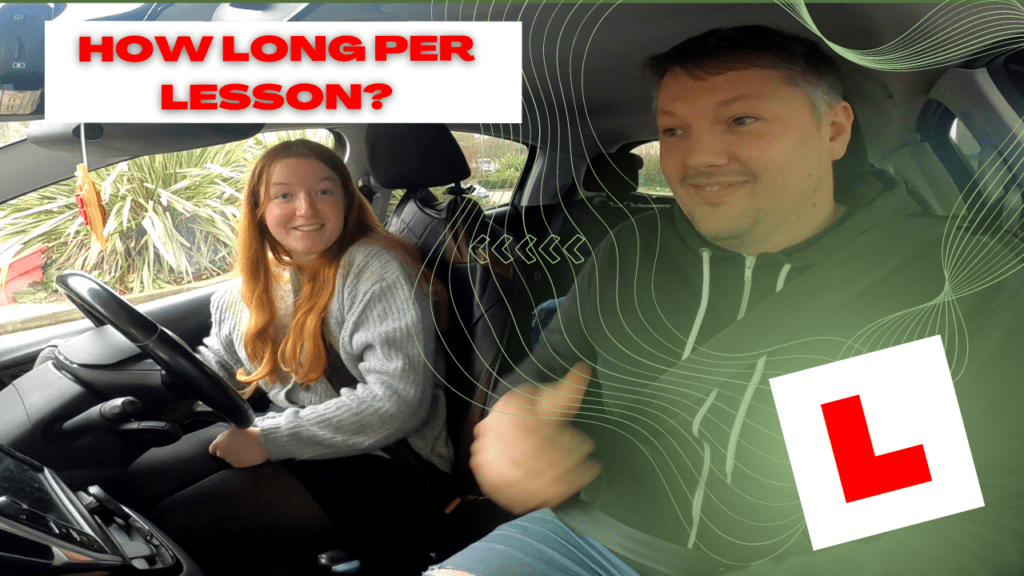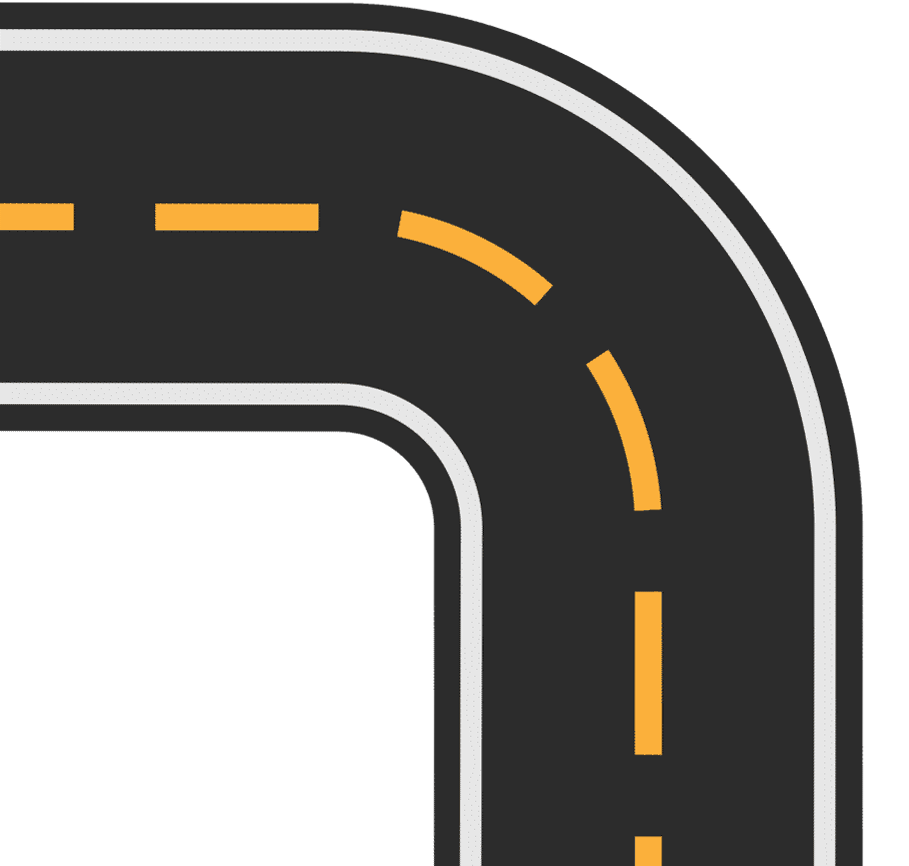So it begins, the daughter has finally turned 17 and presents you with a shiny new provisional driving licence. As it arrives the first question that comes up, “will you teach me to drive”. Now at this point I should probably say that I’m a driving instructor in training otherwise known as a PDI (potential driving instructor).

This is What I Call a Challenge
One would think what a great opportunity to practice my skills on a family member, well I’m here to say it’s probably one of the hardest things I’ve ever done. We all know how much our own kids listen to us once they get to the teenage years and how much we also all know they know everything.
So, the day finally comes, and we set off in my shiny new training car with its shiny new dual controls. “So Shannon when you’re in this car with me I’m no longer your dad I’m your driving instructor are we clear”, I say “that’s fine” I hear her reply.
If you Need some extra help watch one of my popular videos around what the driving examiners want to see, after all its probably been a while since you sat on the driving test and the odd thing might have changed.
First Lesson
So, trying to keep this professional we sit in the car, and I have her do a cockpit drill and familiarise herself with all the controls. Now this child from a very young age has spent an awful lot of time in the car with me.
I Can Drive But I Don’t Know How to Teach Someone Else to Drive
This would be fine if I had been a driving instructor from the start but being that most of my life, I’ve been an extremely busy regional manager whizzing up and down the country embedding lots of bad habits and demonstrating them to my daughter from a young age this wasn’t the case.
The outcome of this was that the first few lessons were spent listening to comments like “but you did it like that” becoming a very common phrase, and me having to explain “yes but we don’t do it like that anymore do we” being my reply.
So, my next challenge was finding a suitable training slope to take my daughter on her first ever drive and having completed the cockpit drill and me explaining what the pom’s (prepare, observe, manoeuvre) routine we prepared to pull away for the first time.
She Surprised me
So, what next, well I’m prepared to be kangarooed up the road and end up with a mild case of whiplash. To my surprise Shannon has other plans. Instead she pulls away like she’s been doing it her entire life. 100 yards or so down the road after being asked to do so smoothly pulls it to the edge of the curb and stops the car perfectly.
I have to say that after my mouth snapping shut like a fly trap, I look at her and said where did you learn to do that? To which she replies, “I don’t know I just can”. Of course, I think it’s a fluke let’s do that again, but no same outcome with me once again left open mouthed.
Stage 2 – The Left Turns
So having convinced myself after several more pulling away and stopping routines and my confidence beginning to build and 2 hours or so after we start to speak about maybe doing some left turns.

My plan is to use my brand-new visual training aid and go through the principles of turning left. So off we set to attempt our first left turn me brimming with confidence, this teaching lark is easy, fortified by the sterling performance of the pulling up and stopping routines.
When The Stress Really Began
Would I say this was a success, no this proved to be somewhat more stressful. Shannon was over steering on her first attempt and almost mounting the curb, but she was fortunately saved by a quick grab of the steering wheel.
How To Deal With Driving Lesson Mistakes
So next plan was to stop and have a discussion of what we thought went wrong, I suggest that she maybe looks where she’s going and not where she’s been and off we go to try our second attempt. This proves to be somewhat more successful and certainly more controlled but not perfect. We continue to practice our left turns and slowly but surely she begins to get the hang of it, at this point I think this is a good time to call it a day and drive us home.

What Happens when you Teach your Kids to Drive
Shannon has now had a good number of hours in the car and her progress has been steady and she’s proving to be a good learner. My challenge remains to try and stay professional. When it’s your own flesh and blood you’re teaching it’s very difficult to not put your dad hat on and scold her when she’s doing something wrong.
I needed to change the way I was speaking to her and change it to how I would speak to one of my students. This is still a challenge but I do my best to praise her in the right way and encourage when she does well. I try to ensure I keep us safe and use all the skills I’ve been learning to make sure that when my daughter finally qualifies as a driver she will be as safe on the roads.
Tips For Parents
- Be patient and supportive: Learning to reverse bay park can be challenging for new drivers, especially teens. As a parent, it’s essential to be patient, understanding, and supportive throughout the learning process. Encourage your teen to ask questions and express their concerns. Offer praise when they make progress and reassure them when they make mistakes.
- Practice in a safe, quiet location: Choose a parking lot or an area with minimal traffic, pedestrians, and distractions for your teen to practice reverse bay parking. This allows them to focus on learning the technique without the added stress of dealing with other road users or obstacles.
- Start with the basics: Begin by teaching your teen the basic steps of reverse bay parking, focusing on one step at a time. Make sure they understand each aspect of the maneuver, including signaling, checking mirrors, steering, and using reference points.
- Demonstrate the maneuver: Before letting your teen attempt reverse bay parking, demonstrate the process yourself, explaining each step as you perform it. This helps them to visualize the technique and understand how to apply the steps in a real-life situation.
- Teach the importance of reference points: Explain the concept of reference points and their significance in reverse bay parking. Help your teen identify suitable reference points on their vehicle and in the environment, and emphasize the importance of using these points to guide their parking.
- Encourage observation and spatial awareness: Remind your teen to be aware of their surroundings while practicing reverse bay parking. They should continually check their mirrors, be mindful of pedestrians, and maintain a safe distance from other vehicles and obstacles.
- Monitor their progress and provide feedback: As your teen practices reverse bay parking, observe their technique and progress. Offer constructive feedback to help them improve, and make adjustments to their reference points or alignment if necessary.
- Gradually introduce real-world scenarios: Once your teen becomes more comfortable with reverse bay parking, start practicing in busier parking lots or areas with tighter spaces. This helps them gain confidence in their abilities and prepares them for real-world driving situations.
- Reinforce the importance of safety: Remind your teen that safety is paramount when parking. Stress the importance of checking mirrors and blind spots, signaling intentions, and being aware of their surroundings at all times.
- Be patient with the learning curve: Remember that learning reverse bay parking takes time and practice. Encourage your teen to keep practicing and refining their technique, and remind them that even experienced drivers can make mistakes or need to readjust when parking. With patience, support, and practice, your teen will become proficient in reverse bay parking.
Would I recommend a parent to teach a child to drive?
Certainly not for the early lessons unless you are trained as a driving instructor and have a car with dual controls, leave that to a professional until they have the basics at least.
If you want to quickly check how to actually book a driving test head over here: https://drivingtestexpert.com/how-to-book-and-manage-the-driving-test/
Why use a driving instructor?
A professional can teach them to keep the car safe and under control. This will then make it easier for you to be able to take them out and get them some time behind the wheel. In my opinion a driving instructor is always the right way to start a child off with the right skill set prior to parent attempting to teach them.

Driving Tip for Parents
Always remember that the instructor will teach your child the necessary skills, which they’re going to need to pass their driving tests. Try not to undo the work the instructor puts in but by all means ask them if you’re unsure and if you think your child is doing something wrong. Driving tests nowadays are much harder than they were in the 80’s and 90’s and it’s not an easy thing to achieve.
Dave Smith Signing out




Leave a Reply